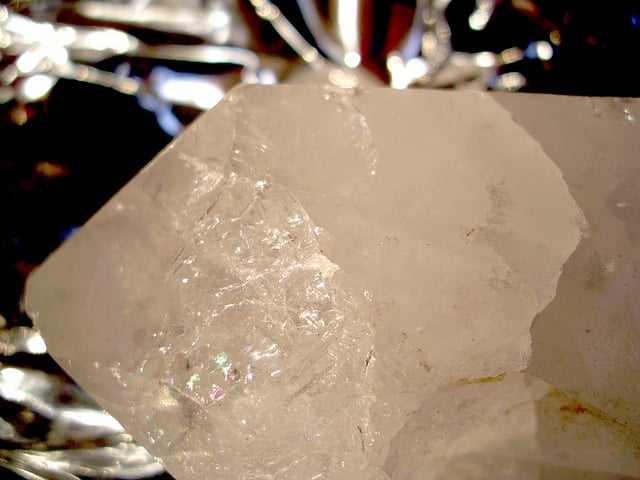How To Make A Quartz Wedge For Polariscope Testing
A quartz wedge can be used with a polariscope to help a gemologist distinguish the + or – optic sign of a gem. Learn how to make and use one.
1 Minute Read
Question
I'm reading the International Gem Society (IGS) polariscope guide and I noticed the quartz wedge in the accessories section. I have never seen one before. Although I'm a gemologist, I'm ashamed to tell you I don't know how to make or use a quartz wedge. I have some very clean quartz crystals and would love to give this a try.
Answer
Making a quartz wedge accessory for your polariscope is not too hard if you have some lapidary skills. Start by sawing a rectangle along the long direction of the crystal. Make it approximately half as thick as it is wide. (The proportions don't have to be precise.) Next, taper it to a point like in the picture below.
You can also buy a quartz wedge online or a plastic substitute, too.
You'll find instructions for using the quartz wedge in part 2 of our polariscope guide. Basically, after finding a gem's optic sign, you can use a quartz wedge and your polariscope to determine whether the sign is positive or negative very quickly. Some additional accessories can help. A jeweler's third hand or a stone holder from a microscope can secure the gem so you can have your hand free to use the quartz wedge. If you don't have these, you might need to recruit an assistant.
Remember that quartz wedges are classed as "fast" or "slow." Part 2 of our polariscope guide has instructions for using both. If you don't know what kind of quartz wedge you have, test it with a gem of known optic sign.
Best Wishes,
Donald Clark, CSM IMG
Polariscope Recommendations
Buy List
Budget
Budget
International Gem Society
Related Articles
Quartz Value, Price, and Jewelry Information
Where Can You Find Agate Stones Forming?
Faceting a Gemstone Pendulum to Feature Inclusions
A View of the Quartzsite Gem Shows
Latest Articles
800 Years of Mogok: A Celebration in Tenuous Times
What is the Average Gemstone Faceting Yield?
Pyroxmangite Value, Price, and Jewelry Information
How to Identify Emerald Simulants and Synthetics
Never Stop Learning
When you join the IGS community, you get trusted diamond & gemstone information when you need it.
Get Gemology Insights
Get started with the International Gem Society’s free guide to gemstone identification. Join our weekly newsletter & get a free copy of the Gem ID Checklist!
